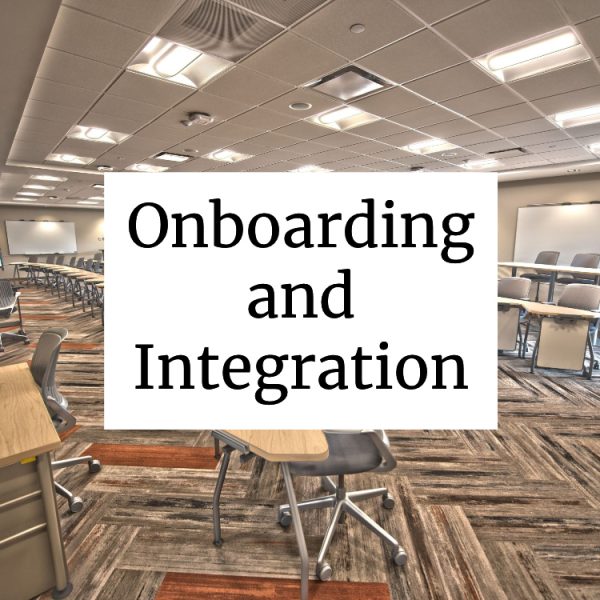According to the National Association for Business Economics, most business economists predict the US will fall into a recession within the next two years. Are you futureproofing your organization? In our previous article, we discussed how to successfully acquire new employees. Once you’ve added to your team, it’s time to ensure they have a smooth start. There are five key areas to evaluate as you onboard and integrate your new hire.
Administrative
Administrative tasks may seem tedious and unnecessary, but they are the foundation of every successful organization. Don’t overlook the benefits of documentation, schedules, and first impressions.
Make sure your handbook is up to date, your New Hire Checklist is functional and progressing, and orientation is on track. If you’re holding group orientation, double and triple check the schedules of any speakers that are presenting and make sure you have the room set up and technology available if they need it. Speakers appreciate readiness and will likely come back again if you’re organized.
When the new hires arrive, have someone greet them at the front desk and show them where to go. Perhaps you’ll finish up the necessary paperwork and releases before the facility tour. Tours are a great way to familiarize new hires with restroom facilities, break rooms, and key department areas. If the schedule provides time for department introductions, send the new hires with appointed personnel, and be sure to remind them when they need to be back to orientation or if they’re released to the job.
Company and Tribal Culture
If your orientation includes multiple hires, have an executive drop by to share the mission, vision, and values. New hires appreciate the opportunity to meet with upper-level management. Alternatively, you can share the mission, vision, and values during a slide presentation or include it on your facility tour if it’s prominently displayed in the building.
If your organization has a mentoring program, be sure to explain how it works. If possible, have the new hires meet their mentors during orientation and provide a few minutes for introductions and goal setting.
Don’t forget to share the organizational chart, and provide a printout if you can. Having key contacts readily available reduces confusion and saves everyone time.
Job Support
Have you ever arrived on the first day of work and had nothing to do because your equipment wasn’t ready? You’re not alone! This happens more than organizations like to admit. That’s why it’s important to coordinate with the IT department to ensure new employees have what they need on day one, including computers, software, access privileges, phones, badges, and other necessary components of the job.
Manager Involvement
Employees who know what’s expected of them perform better than those who don’t. While that may seem obvious, setting expectations isn’t common practice, leading to huge losses in productivity according to one study.
Managers should make communication their top priority. Setting expectations and goals, while continuously providing coaching and feedback leads to clarity, focus, productivity, and improvement.
It Doesn’t End at Orientation
Once orientation is over, it may feel like your work is done. However, scheduling check-ins with employees not only fosters an environment where they feel cared for and listened to, but it can provide invaluable information that helps you do your job better.
Ask for feedback and find out how you can improve. This can be via survey, one-on-one, or in focus groups. Then, implement suggestions that foster a healthy employee lifecycle and are in line with your organization’s mission, vision, and values. To download the Onboarding & Integration tool, click here: Onboarding and Integration.

